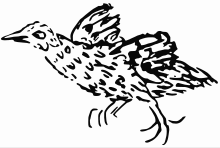Peter Mundy
Jump to navigation
Jump to search

Peter Mundy (fl. 1597 – 1667) was a seventeenth-century British factor, merchant trader, traveller and writer. He was the first Briton to record, in his Itinerarium Mundi ('Itinerary of the World'), tasting Chaa (tea) in China and travelled extensively in Asia, Russia and Europe.
Quotes[edit]
- Harleian MS. 2286; Additional MSS. 19278–19281; Bodleian Library (Rawlinson MS. A. 315)
- J. S. Courtney, A Guide to Penzance and Its Neighbourhood (1845), pp. 15–16
- Sir R. C. Temple, ed., The Travels of Peter Mundy, in Europe and Asia, 1608—1667, 5 vols. (1907–1924)
- ... I Doe allsoe conffesse thatt Many things are Misplaced, as some First that should bee last, and soe to the Contrary; allsoe some things therin mought bee better lefftt outt and others omitted Were better in there place. Thus For Matter and phrase. All this allsoe I could Mend, and When I had Don, even begin againe, butt, as I said, the phrase is sutable to the Matter. Yett, however, lett this one thing breed some better liking off itt, Thatt I have endeavoured to com as Near the truth off the Matters Discribed as possibly I could attain unto by my owne experience or the Most probablest Relation off others.
- Mundy, Travels, I, p. 6
- From Buckever hither were above 200 Munaries' [mīnār, pillar], with heads mortered and plaistered in, leaveinge out nothing but their verie face, some 30, some 40, some more some lesse. This was Abdula Ckauns exploit (whoe is now Governour of Puttana), by the kings Order. For this way was soe pestered with Rebbells and Theeves, that there was noe passinge; soe that the Kinge sent Abdulla Ckaun, with 12,000 horse and 20,000 foote to suppresse them, whoe destroyed all their Townes', tooke all their goods, their wives and children for slaves, and the cheifest of their men, causeing their heads to bee cutt of and to be immortered as before [depicted].
- To the Munares of dead mens heads made bv Abdulla Ckaun [’Abdull’ah Khān] are added since our comeinge this way by Furzand Ckaun [Farzand Khān] about 60 more with 35 or 40 heads a peece, lately killed.
- Neere Etaya [Etāwa] there was a new Munare a makeinge with a great heape of heads lyeing by them, ready to bee immortered.
- Here is a Hindooe Dewra ruinated, it seems by Moores envieing its beautie, adorned on the outside with the best Carved worke that I have seene in India, verie spacious and high, yett not a handbreadth from the foote to the topp but was Curiously wrought with the figures of men and weomen etts. their fabulous stories. Now the said Edifice is defaced by the throwing downe the Copulaes, Arches and pillars thereof, breaking the Armes, Leggs and Noses of the said images…
About[edit]

- It is rare to find a man so representative of his period as was Peter Mundy. In an age when curiosity was the outstanding characteristic of intelligent Englishmen, curiosity was the ruling passion of this life. ... His insatiable appetite for information, his eye for detail, his desire for accuracy, would have made him in modern times a first-rate scientist. ... True to his period, also, was his heartlessness ... he was more interested in the appearances of things than their implications in the lives of human beings. ... But if he was unfeeling, he was by no means insensitive; each strange item in the surprising world he had inherited is described with a spontaneous brilliance seldom to be found in modern writing.
- Dorothy Carrington, The Traveller's Eye (London: Pilot Press, 1949), pp. 178–179
